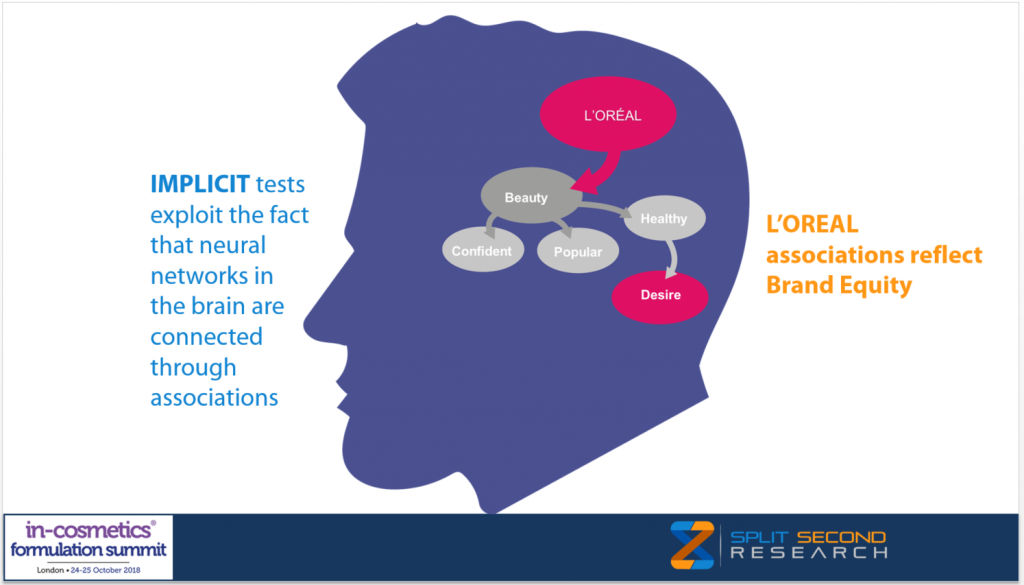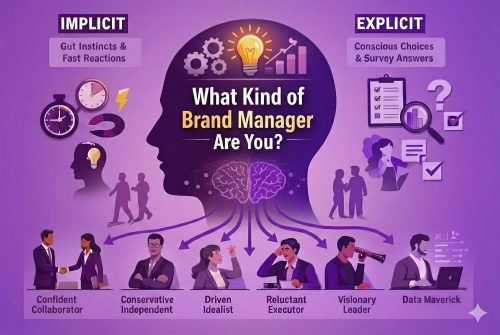
Dr Eamon Fulcher presented at the in-cosmetics formulation summit, London October 24, 2018
In its fourth year, the in-cosmetics Formulation Summit is an education-focused convention, that captures the strongest trends driving the industry.
This year it included a number of leading international experts for the benefit of R&D professionals, senior formulators, and decision makers from cosmetics brands, manufacturers and ingredient suppliers.
Dr Eamon Fulcher talked about how the brain rapidly evaluates all that we see, hear, smell, touch, and taste. Faces are a special case, because a significant proportion of the brain is dedicated to face recognition, hence we can recognise faces with incredible accuracy, distinguish between subtle variations in facial expression, and evaluate them very quickly on an array of important attributes. One of these is attractiveness. Evolutionary psychologists have argued that our biological imperative is to protect and propagate our genes. We can do this through reproduction and by searching for a healthy mate. This is important because our genes are more likely to survive if we partner with a healthy mate. Beauty becomes a proxy for health. The use of make-up to try to make oneself look more beautiful has been going on for at least seven thousand years, and can be traced back to the Egyptians and the ancient Greeks.
More recently, psychologists have established that the more beautiful a person is (or appears to be) the more likely they are to be perceived more positively on an array of desirable attributes, such as emotionally secure, sociable, interesting, confident, organised, popular, and intelligent (to name just a few). This is termed the halo effect, and works even when we see the same person with and without make-up. Even though we know they are the same person (and we know that personal attributes are pretty much stable), we can’t help but attribute these positive features to them when they appear more attractive. Even babies have been shown to prefer more attractive faces. It’s not surprising then that most of us would like to be perceived as attractive by most or at least some people! These ideas can help explain why the cosmetics industry is so huge.
One problem for cosmetic scientists is that sooner or later they will need to do some consumer testing on their beauty products. Here they meet the truth gap – people don’t always tell you how they truly feel (they may want just to please you or they may want to hide how they feel), people can’t always say how they feel (they can’t easily put into words how they feel or their feelings may be in their subconscious), and they don’t always do what they say they are going to do (like signing up for the gym on the 1st of January and never going again!). If one’s market research is based only on what consumers verbally tell us (subjective reports), then we are not going to get a true picture of the likely success of our products.
One way to circumvent this problem is to use a more objective method, and one that does not rely on asking questions to obtain explicit responses. Implicit reaction time tests offer a valuable tool to accompany traditional quantitative surveys. Implicit reaction time tests can detect the associations that consumers have with brand names, product endorsers, cosmetics packaging, new formulations, fragrances, and more.

During the talk, Eamon demonstrated how implicit testing, coupled with neural network technology (a form of artificial intelligence or deep learning), can help model consumer perception of the brand or product (or any formula or proposition). Hence one can build a neural network model of the brand or product. A model that represents how consumers perceive and feel. This can yield insights that really help identify the strengths, weaknesses, opportunities, and threats for the stimulus being tested, and in relation to other formulations and those of competitors.
Latest Posts
Join Our Newsletter
Subscribe to our email newsletter to keep up to date with our latest insights, news, and findings on market research, implicit testing and our occasional psychological ‘neuro-nuggets’ of wisdom.
Our blog

What Kind of Brand Manager Are You?
If you’re a brand manager, you may plan carefully, but a lot of how you work day to day probably comes down to habit and

When it comes to research, is everyone biased?
Well yes, as a matter of fact, everyone is There’s no shame in it. We’re all biased in some way or another, although understandably we’d

Market Research with Human and Synthetic Respondents
The idea of synthetic respondents in market research arises from a desire to simulate human responses using artificial intelligence. Instead of collecting data from real

